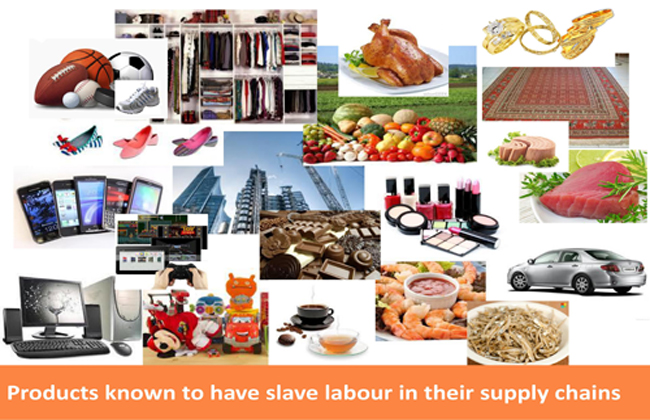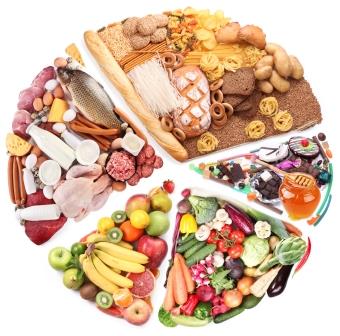
One heinous crime that is often overlooked in consumerism is the use of slave labour during the production and in the supply chains of many of the products that we consume every day.
The Global Slavery Index 2016 estimates that there are about 46 million slaves in the world today. Slave labour is defined as involving workers who are forced to work for little or no pay under exploitative conditions and do not have the freedom to walk away (a subset of which is victims trafficked for labour). Commodities dependent on slave labour include chocolate, tea, sugar cane, cotton, garments, shoes, prawns and fish; these industries even employ child slaves on their plantations and farms and in their factories. Slaves are extensively used in in Africa and Asia in the mining of minerals that are used to manufacture electronic goods, including laptops, TVs and handphones…. and cosmetics and car paint too! Another industry which is notorious for the use of slave labour is aquaculture in Thailand and the Asian sub-continent. Thailand is one of the largest seafood exporters in the world. It has been well investigated and documented that the Thai fishing industry is rife with slave labourers on board fishing vessels, where they are physically and sexually abused and poorly fed. They work long hours with little or no pay. Some of them were murdered, and others committed suicide. In the fashion industry, the business model of high street fashion brands is to push out new trends and colours every two weeks, at very affordable prices. These ‘fast fashion’ businesses go for volume and low margin. Fast fashion businesses and other firms are skilled at manufacturing consumer demand and invest large sums of money in consumer psychology research to do so.
| |
 |

Have you noticed how the prices of goods, be it food, garments or electrical appliances (startlingly handphones!) have dropped by heaps and bounds over the years? Why do prices always drop? The first thing that comes to most people’s minds is ‘globalisation’ and ‘competition.’ Competition is good for consumers as we, the consumers, will get the best deals, the so-called cheap and good buys. Yet how do companies continue making profits while competing on price? The only way is to reduce the cost of doing business, the largest components are raw materials and labour. Many businesses opt to cut costs on labour as this is the least visible to consumers and neither damages the brand nor the quality. Businesses have direct control over labour costs. For some, this has gone way too far, resulting in the employment of slave labour in the production and supply chains of food and products that are sold in our supermarkets and shops.
The price of one slave today is approximately US$130 (cheaper than a handphone or a pair of sneakers), which is the same as in 1860 during the transatlantic slave trade. At that time, slavery was legal. Today, slavery is legal nowhere, but it exists everywhere! Slavery exists in mining, farming, fishing, manufacturing, construction, as well as prostitution and the service industries. It is the second largest global business in the world today and is valued at US$150 billion a year, second only to drugs.
| |
 |

Slavery is hidden in plain sight. Consumers are complicit in the global slave trade if we are not cognisant of the relationship between consumerism and slavery. People are treated like polystyrene cups, cheap and disposable. Child slave workers get injured at work, disabled for life or die young. Let’s look at resources holistically. Neither natural resources nor workers should be exploited to produce the goods and services that we consume. Let us consume with a conscience. Reduce consumption, reduce waste. Let’s think before we consume and spend our consumer dollars wisely and selectively.
| |
 |

 |
Together with ATLAS of UniSIM, EmancipAsia launched “Be Fair, Buy Fair” campaign which aimed to raise awareness on the prevalence of human trafficking and slavery in the food industry and to encourage active support of ethical practices in fair trade. An online survey was developed to understand consumers’ behaviour and awareness level of slave labour and human trafficking in the supply chains of food products sold in Singapore. This survey was 100% anonymous.
The campaign closed in December 2016. Results of the survey will be used by EmancipAsia as well as tertiary and secondary student groups for advocacy work; and for the education of the general public and students to encourage them to reflect on their consumption preferences.
|
We continue to collect data and welcome your participation in this survey. To do the survey, click here.
|
